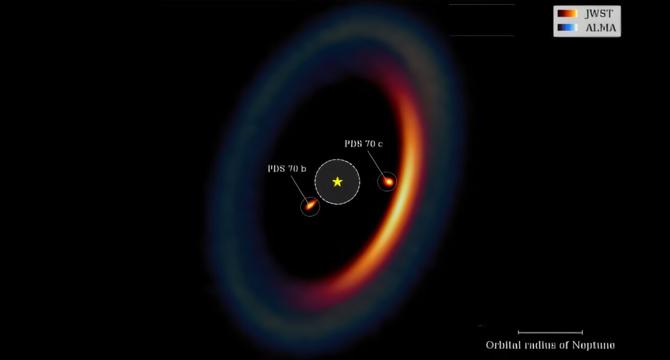Knowridge
2M
137

Image Credit: Knowridge
Webb telescope reveals birth of planets in a distant star system
- The James Webb Space Telescope (JWST) has aided astronomers in studying the formation of planets in a distant star system.
- A team led by a Ph.D. candidate used JWST to observe a young star called PDS 70, where two planets are in the process of forming.
- These findings, published in The Astronomical Journal, offer insights into planet formation by gathering material from the surrounding gas and dust.
- PDS 70 is a very young star with a large gap in its disk where planets PDS 70 b and PDS 70 c are actively growing by pulling in gas and dust.
- Observations using JWST's NIRISS instrument revealed details about the planets through a technique called Aperture Masking Interferometry.
- The study confirmed that the planets are accumulating material, supporting the idea of planetary growth through accretion.
- There are indications of circumplanetary disks around the planets, possibly hinting at moon formation similar to Jupiter and Saturn's moons.
- The discovery of a possible third planet in the system adds intrigue, with further JWST observations needed to confirm its nature.
- This study is significant in planetary science, showcasing the struggle planets face in competing with stars for material during their formation.
- The potential discovery of circumplanetary disks and a third planet offers new avenues for understanding planet formation in various systems.
Read Full Article
8 Likes
For uninterrupted reading, download the app